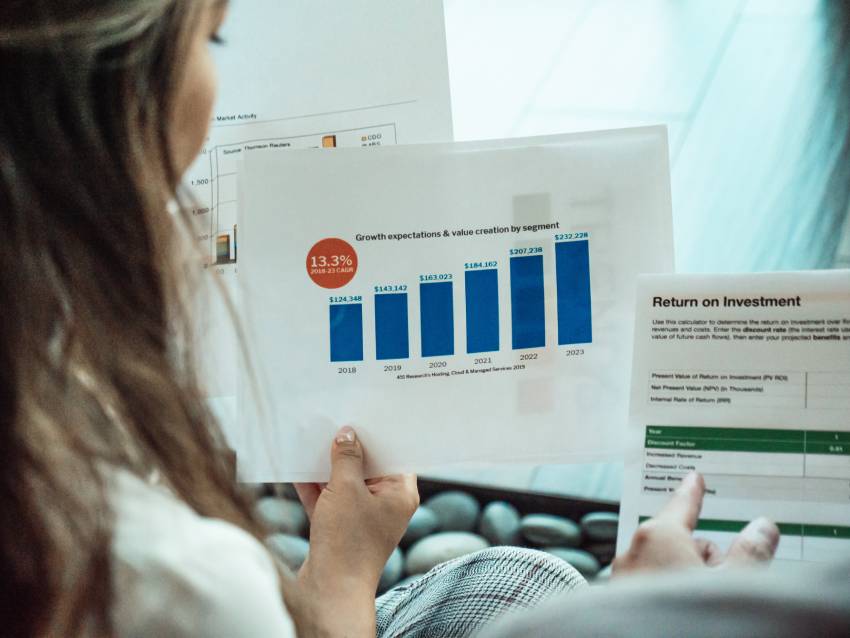Table of contents
What is Gross Margin Return on Investment?
The gross margin return on investment (GMROI) is a specific inventory investment evaluation ratio used to analyze the company’s ability to translate given inventory into cash. The catch is to do such a thing with a translation between the inventory cost. In addition, GMROI illustrates how much profit can be turned from inventory sales after covering the inventory cost.
Getting a higher gross margin return on investment means having a better deal. Namely, because each unit of inventory generates a higher profit, considering the average inventory cost, the average inventory investment will be higher. The concept shows a direct correlation between profit and inventory cost. The principle indicates how much profit a firm can get from an inventory unit.
The important aspect of GMROI is its ability to show a substantial variance based on the degree of market segmentation. Besides, when considering GMROI, it is crucial to consider factors like the period and the type of items in the inventory.
When it comes to the illustration of GMROI in action, one can appeal to the example in retail. In general, the notion shows whether a retailer can profit from the existing inventory. At this point, a retailer needs to know the gross margin and the inventory cost.

How to calculate the Gross Margin Return on Investment?
The formula for calculating GMROI is similar in most situations. However, the investment costs will be different depending on the scenario and the final objective. Essentially, to calculate GMROI, you need to divide gross margin by the average inventory cost. To calculate the gross margin return, it is important to subtract the cost of goods sold (CoGS) and divide it by the total revenue.
Showing an example of how GMROI is calculated, consider the following scenario: a company with a revenue of $1 million. Its CoGS is $500,000. The inventory cost is estimated at $300,000. At this point, GMROI is calculated in several key steps:
- First, it is important to calculate the gross margin of the company. To do that, one should subtract CoGS from the revenue. It will be $1 million minus $500,000, resulting in gross margin being $500,000
- Second, dividing the gross margin by the average inventory cost is important. It results in $500,000 minus $300,000, thus GMROI equaling $1.67.
It means that, on average, the company’s margin return is $1.67 in profit from every dollar the firm spends on the inventory. The simple formula shows the inventory investment degree employing several key variables, including the gross margin and average inventory cost.
How to increase Gross Margin Return on Investment?
Improving return on inventory investment is completed in a series of steps. Essentially, it is crucial to remember that these steps comprise a general approach toward GMROI regardless of the industry. The evidence dictates three particular phases are important:
- Improving forecast accuracy. Low GMROI means there is something wrong with your inventory investment. It shows the company is buying more inventory than selling. In such a case, firms that can make accurate market forecasts make better purchasing decisions in terms of stock. If a company knows how many units it needs to maximize sales, the firm will get a high GMROI and drastically increase it.
- Pricing optimization. There is a direct link between the unit’s price and GMROI. However, increasing the unit’s price does not necessarily mean an increase in GMROI. In reality, the law of supply and demand dictates that price increases in sales decrease. Having high prices for units does not increase GMROI. The company needs to optimize prices to maintain reasonable prices and not trigger sales decreases. Such a strategy is a direct way toward an increase in GMROI.
- Cutting inventory costs. Increasing GMROI also depends on smart inventory cost strategies. Customers are becoming more tech-savvy. They expect flexible pricing options. In such a case, especially for retailers, timely cutting of inventory cost can be a strategy to boost GMROI massively. One of the key aspects is always keeping inventory units in a cost-efficient manner.
These strategies shed some light on the ways of increasing GMROI. Inventory investment includes a range of factors directly affecting the return margin. Following the steps mentioned above, companies ensure an increase of GMROI and proper pricing strategies at hand.
Gross Margin Return on Investment Tree
As mentioned before, GMROI is an inventory profitability ratio that focuses on how well a company can turn its inventory into cash or investment. The general principle dictates the gross margin return being most applicable to industries heavily relying on the stock. The retailing industry is the most appropriate for GMROI consideration in such a case.
The GMROI tree for retail contains several key features. First and foremost, there is a correlation between high sales and smaller margins, namely because of the requirement for excessive inventory. Second, the larger stock usually results in lower margins. Finally, high-profit single units produce lower GMROI.
All in all
Gross margin return on investment illustrates the process of inventory conversion into cash based on a range of factors. The calculation of GMROI depends on gross margin and the inventory cost. Besides, the increase of GMROI can be achieved through price optimization, cutting inventory costs, and improvement of forecast accuracy.








